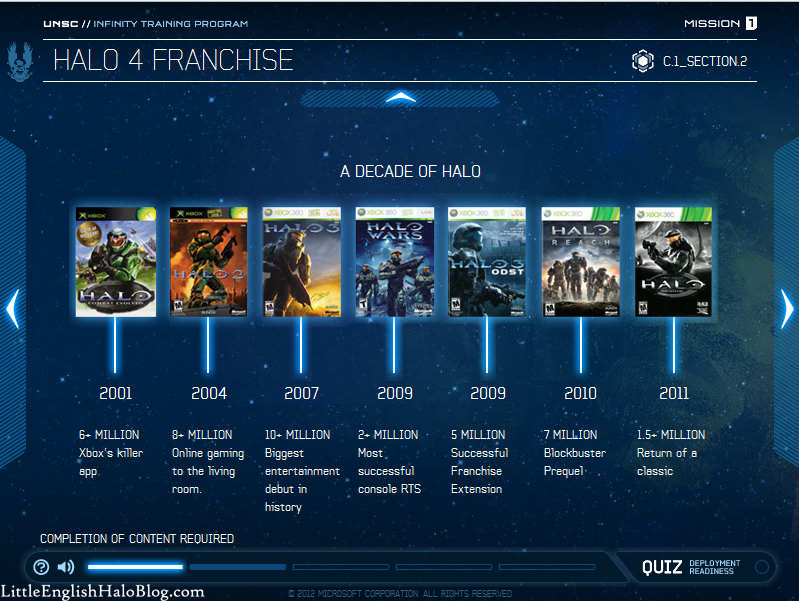The Halo franchise has been a staple in the gaming community since its inception, captivating millions of players around the globe. The Halo release timeline is not just a sequence of dates; it represents the evolution of storytelling, gameplay mechanics, and technological advancements in the gaming industry. This article will delve into the intricate timeline of Halo releases, discussing each title's significance and impact on both the franchise and the gaming landscape at large.
In this detailed guide, we will explore various aspects of the Halo universe, from its initial launch to the latest installments. The franchise has not only redefined first-person shooters but has also established a rich lore that continues to engage fans. As we navigate through the release timeline, we will highlight the key features, improvements, and innovations introduced with each game.
Whether you are a longtime fan or a newcomer to the series, understanding the Halo release timeline will provide you with valuable insights into the franchise's journey. Join us as we embark on this exploration of Halo’s storied past and its exciting future.
Table of Contents
- The Origin of Halo: Combat Evolved
- Halo 2: The Game That Changed Everything
- Halo 3: The Conclusion of a Trilogy
- Halo Wars: Expanding the Universe
- Halo: Reach - A Prequel with Heart
- The Halo 4 Revival
- Halo 5: Guardians and Multiplayer Innovations
- Halo Infinite: A New Era
The Origin of Halo: Combat Evolved
Released on November 15, 2001, Halo: Combat Evolved marked the beginning of an iconic franchise. Developed by Bungie and published by Microsoft Game Studios, this title was a launch title for the original Xbox and quickly became a commercial success.
Key Features:
- Innovative gameplay mechanics that combined shooting and vehicular combat.
- A compelling story set in a science fiction universe with rich lore.
- Multiplayer modes that laid the groundwork for future online gaming.
Halo 2: The Game That Changed Everything
Halo 2, released on November 9, 2004, expanded upon its predecessor's success, introducing significant innovations that reshaped the gaming landscape.
Highlights:
- The introduction of online multiplayer through Xbox Live.
- A dual-wielding combat system that allowed players to use two weapons simultaneously.
- Expanded storytelling with multiple playable characters.
Halo 3: The Conclusion of a Trilogy
Halo 3, released on September 25, 2007, served as the conclusion to the original trilogy, delivering a satisfying resolution to the storylines established in the previous games.
Notable Aspects:
- Enhanced graphics and gameplay mechanics.
- New multiplayer features, including the Forge mode for custom map creation.
- A rich narrative that tied up loose ends in the overarching story.
Halo Wars: Expanding the Universe
In 2009, Halo Wars was released, marking the franchise's first foray into real-time strategy (RTS) gaming. Developed by Ensemble Studios, it provided a different perspective on the Halo universe.
Key Features:
- A unique storyline set before the events of the main Halo series.
- Accessible gameplay that attracted a broader audience.
- Introduction of new characters and factions.
Halo: Reach - A Prequel with Heart
Halo: Reach, released on September 14, 2010, served as a prequel to the original Halo: Combat Evolved, focusing on the fall of the planet Reach.
Significant Highlights:
- A darker narrative that explored themes of sacrifice and heroism.
- Improved graphics and enhanced gameplay mechanics.
- An emotional storyline that resonated with fans.
The Halo 4 Revival
After a brief hiatus, Halo 4 was launched on November 6, 2012, marking the beginning of a new trilogy developed by 343 Industries.
Key Innovations:
- Advanced graphics and a more cinematic approach to storytelling.
- The introduction of new enemies and gameplay mechanics.
- A focus on Master Chief's character development.
Halo 5: Guardians and Multiplayer Innovations
Halo 5: Guardians, released on October 27, 2015, pushed the boundaries of multiplayer gaming with its focus on competitive play and eSports.
Highlights:
- A new multiplayer mode called Warzone, promoting large-scale battles.
- Enhanced customization options for characters and weapons.
- Continued narrative development with new characters and story arcs.
Halo Infinite: A New Era
Halo Infinite, released on December 8, 2021, aimed to revitalize the franchise while honoring its roots. The game introduced an open-world design, allowing players to explore the vast landscapes of Zeta Halo.
Key Features:
- An open-world environment that encourages exploration and player agency.
- A return to classic gameplay mechanics with modern enhancements.
- A focus on storytelling and character development.
Conclusion
Throughout its history, the Halo franchise has continually pushed the boundaries of gaming, evolving with each release. From the innovative mechanics introduced in Halo: Combat Evolved to the expansive universe of Halo Infinite, the timeline reflects a commitment to quality and storytelling. Fans of the series can look forward to future developments as 343 Industries continues to build on this beloved franchise.
We encourage you to share your thoughts on the Halo release timeline in the comments below. What is your favorite Halo game and why? Don't forget to explore other articles on our site for more insights into the gaming world!
Closing Thoughts
Thank you for joining us on this journey through the Halo release timeline. We hope this comprehensive guide has enriched your understanding of the franchise. Stay tuned for more exciting content, and we look forward to welcoming you back to our site!




